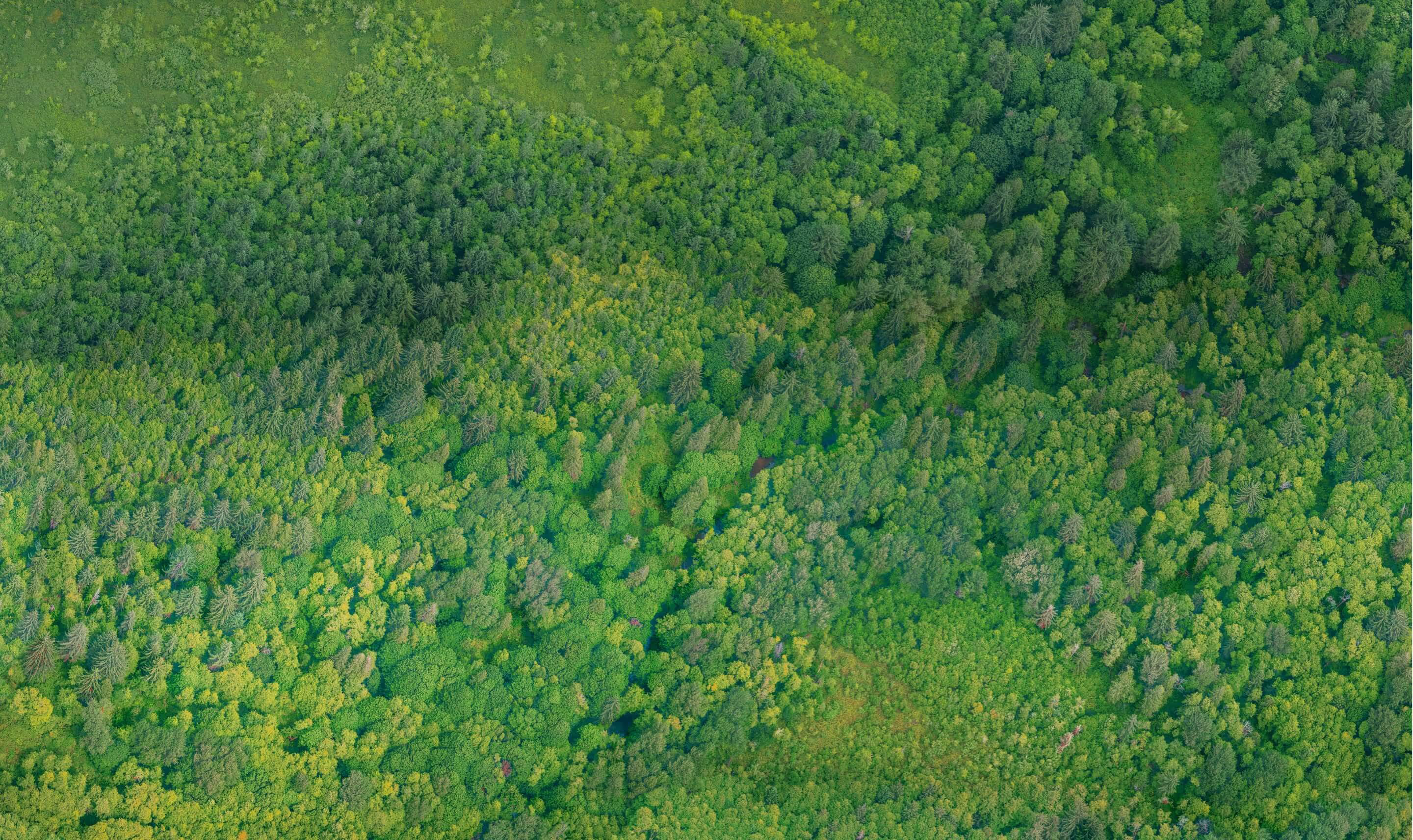The impact of deforestation on mangroves and the urgency of their restoration
.avif)
Mangroves, natural and often unknown jewels of our planet, are essential ecosystems. Preservation of marine and terrestrial biodiversity, maintenance of the ecological balance of coastal areas, carbon sinks, etc. They do all this at the same time and much more. However, these precious forests located between land and sea are now threatened by deforestation. It is urgent to protect and restore them. Let's all take up this challenge together!
What is a mangrove?
A mangrove is a unique forest ecosystem located in tropical and subtropical coastal areas. It thrives in soil rich in sediments and organic matter, often swampy and saturated with salt water. These forests play a vital role in keeping the land tidal, filtering water, and providing crucial habitat for marine wildlife and coastal birds. However, every year, thousands of hectares of mangroves are deforested...

The causes of mangrove forest deforestation
Mangroves are under increasing pressure due to deforestation. It is estimated that nearly 35% of them have already been destroyed in the last 20 years. Why are they experiencing such deforestation?
Agricultural and urban expansion
In many countries, the development of agriculture is the reason for the clearing of mangroves. The same is true for the construction of urban infrastructures such as homes, roads, ports and facilities. According to a study conducted by AGEOS in 2021, in Gabon for example, in the Libreville area, the mangrove is being eaten away by urbanization, logging, port development and tourist facilities. Between 2007 and 2020, the Igoumié mangrove, which is one of the emblematic sites, lost 36.6 hectares of its surface. In Bangladesh, the Sundarbans mangrove forest, the largest in the world, has suffered the same fate in the face of land use by agriculture, industrial development and rising sea levels.
Extraction of natural resources from mangroves
The mangrove forest is exploited for its precious wood. It is used for construction, furniture manufacturing, and as an energy source. Unregulated, these cuts often lead to uncontrolled deforestation, with devastating consequences for local biodiversity and the stability of coastal ecosystems.
But these forests are also full of other resources such as salt, coal, oil, and sometimes gas. Most of the time, the extraction of these natural resources has a negative impact on water and soil quality in these areas. Waste from mining and industrial exploitation can contaminate aquatic ecosystems, while excessive deforestation can lead to increased soil erosion and loss of fertility.

Aquaculture vs mangrove
In some countries, mangroves are transformed into ponds for aquaculture, especially for shrimp and fish farming. Examples include Vietnam, where shrimp aquaculture is an important industry in the Mekong Delta. Also in Indonesia, large coastal regions have been affected by the conversion of mangroves into ponds to meet the growing demand for seafood in domestic and international markets.
Pollution
Pollution from industrial waste, sewage, and oil spills can damage mangrove forests and cause them to disappear.
Climate change
Combined impacts of climate change can compromise the health and resilience of mangrove ecosystems. They jeopardize their ability to provide vital ecosystem services and to support the human communities that depend on them.
The risks of floods and submersions
Rising sea levels expose the mangrove swamp forest to an increased risk of flooding and submersion, threatening the fauna and flora that inhabit it.
The impact of storms and cyclones
In addition, the increase in the frequency and intensity of tropical storms and cyclones causes direct physical damage and alters the dynamics of watercourses, thus affecting the ecosystem as a whole.
The displacement of optimal growth areas
These events also change the optimal growth conditions of mangroves, leading to a potential shift in their geographical distribution.
The increase in water salinity
In addition, the increased intrusion of seawater into estuaries can increase water salinity, and affect the biodiversity and health of mangroves.
The alarming consequences of mangrove deforestation
Mangroves, guardians of biodiversity
Mangrove forests are home to an incredible variety of plants, animals and microorganisms, making them one of the most biodiverse ecosystems in the world. According to the International Union for Conservation of Nature (IUCN), approximately 18% of marine fish species, and nearly 85% of commercial fish and seafood species spend part of their lives in these habitats. Their aerial roots and tidal zones provide them with vital habitats. There are also migratory birds and even mammals such as manatees and crocodiles.
The destruction of these habitats leads to the disappearance of numerous species, some of which are even in critical danger of extinction. For example, the Bengal tiger, the sea leopard, and the tundra dung beetle all rely on mangroves for their survival.

The loss of income and subsistence for coastal populations
In addition to its impact on the environment, mangrove deforestation also has significant socio-economic repercussions. Indeed, it is one of the sources of livelihood for coastal communities. Their food security and living standards are threatened by the loss of their natural resources: nuts, fruits, nuts, fruits, fish, crustaceans and molluscs, medicinal plants, building materials, firewood, firewood, income from fishing and aquaculture, etc.
The mangrove, a natural protective barrier in danger
The deforestation of hectares of mangroves has devastating consequences for the environment and the communities that depend on them. These ecosystems act as a natural barrier against storms, tsunamis, and coastal erosion, protecting local populations from natural disasters.
Unsung allies in the fight against climate change
The mangrove forest is in a good position in the list of actors contributing to the fight against climate change. Why? Its vegetation absorbs and stores carbon dioxide as well as any terrestrial tree, and in fact much better. That's what we call the “blue carbon”. According to a study from UNEP, mangroves store up to four times more carbon per hectare than terrestrial tropical forests.
Act quickly for a sustainable future
Faced with this looming threat, it is imperative to act quickly to protect and restore our mangroves.
Mangrove restoration initiatives are already under way in many countries, involving governments, NGOs, local communities, and private businesses. These efforts aim to replant mangroves, protect existing areas, and promote sustainable management of natural resources.
Did you know that? Since 2015, July 26 has been the International Day for the Conservation of the Mangrove Ecosystem. This UNESCO initiative aims to raise awareness about the consequences of mangrove deforestation and to explore solutions to prevent this deterioration.

Restoring mangroves, but not just any way!

Restoring mangroves is not only about replanting trees, but also about restoring the ecosystem as a whole, taking into account multiple factors.
Each case is specific. Before replanting, a field study is essential. It is necessary to understand what are the causes of mangrove deforestation. Can it reconstitute itself in the event of pollution or overexploitation or is human intervention necessary? While this is essential, it is crucial to understand the importance of the needs of local populations and their involvement, to select the right seedlings, and to set up a functional nursery.
For many years, our NGO LIFE is actively working to protect and replant the mangrove, as well as to make local populations aware of the importance of their preservation. In Indonesia, in Sumatra, with our SAPOUSSE campaign, we are replanting 50,000 trees, including a large number of mangroves (Rhizophora apiculata and Rhizophora stilosa), an emblematic figure of these forests. These are two varieties that occur naturally in the area of intervention. The team works together with the government and local populations and its partner on the ground: Yagasu. In addition, training was provided to ensure the development of a silvo-fishing pond, but also to set up a micro-enterprise using mangrove resources as a food base and for the manufacture of batik.


The deforestation of hectares of mangrove forests is a serious threat to biodiversity, coastal populations and the global climate. However, there are solutions to preserve and rebuild these vital ecosystems. Promote the sustainable management of natural resources, raise public awareness of the importance of these habitats, etc. All of these actions allow us to build a future where mangroves thrive and continue to provide ecological, socio-economic and climate benefits that are essential for our planet.



.avif)



.avif)

